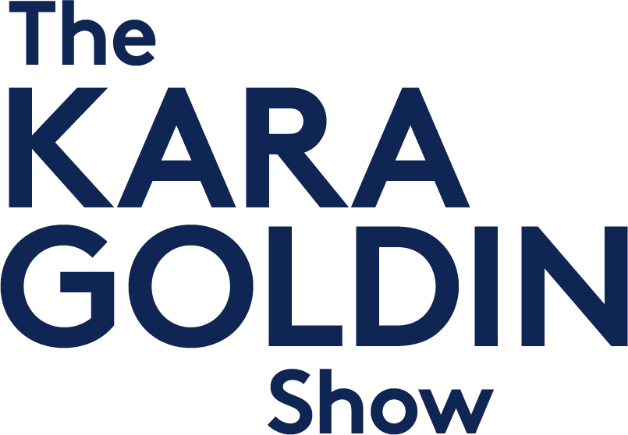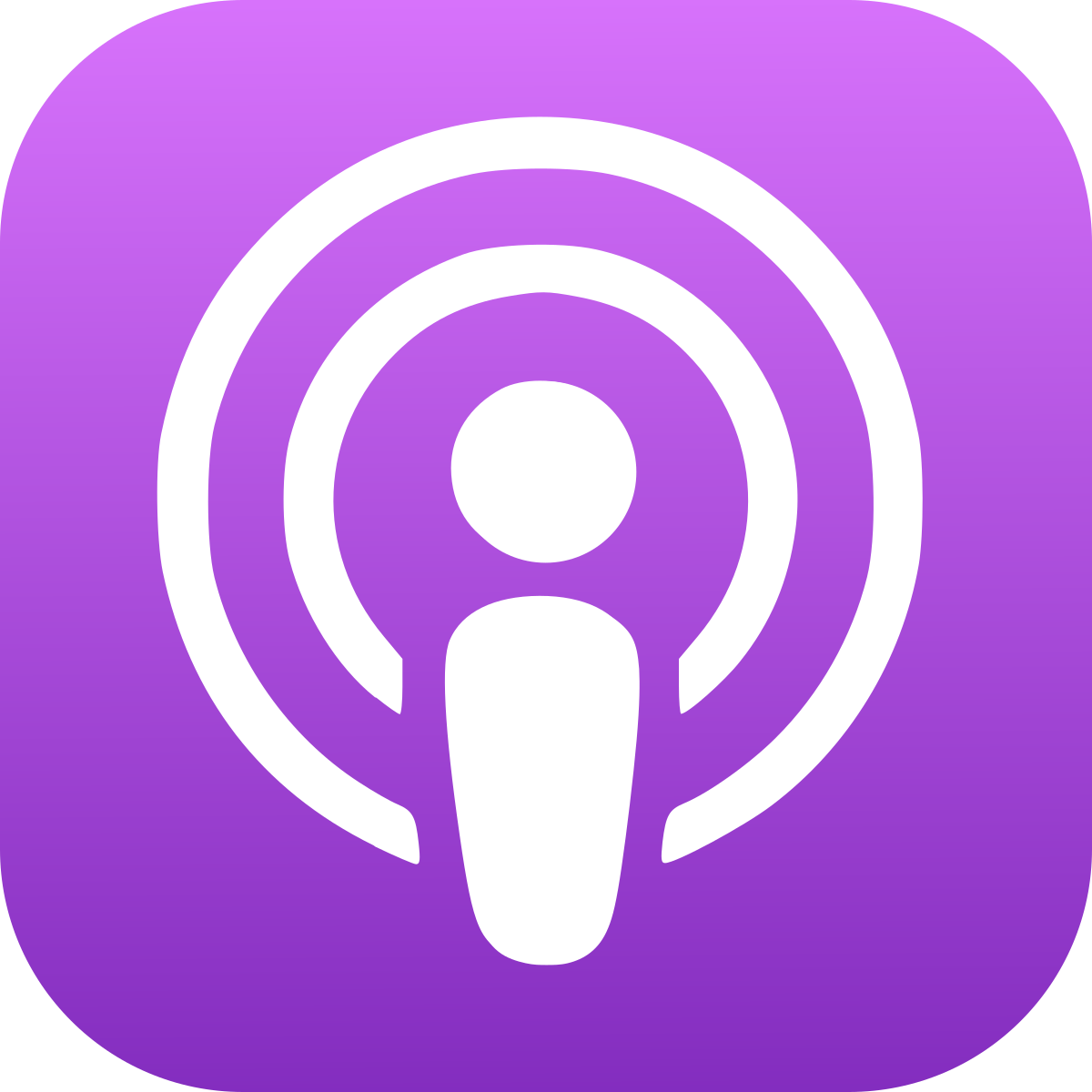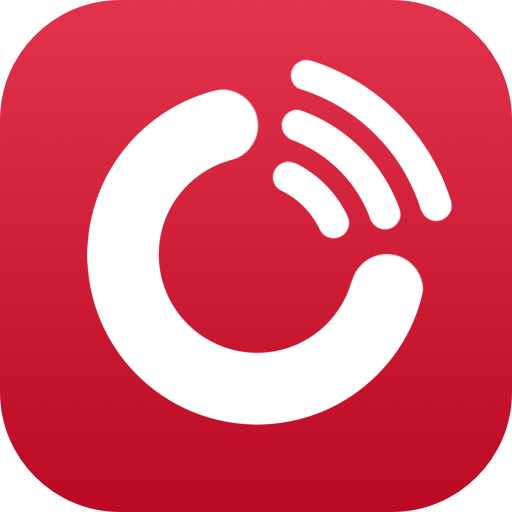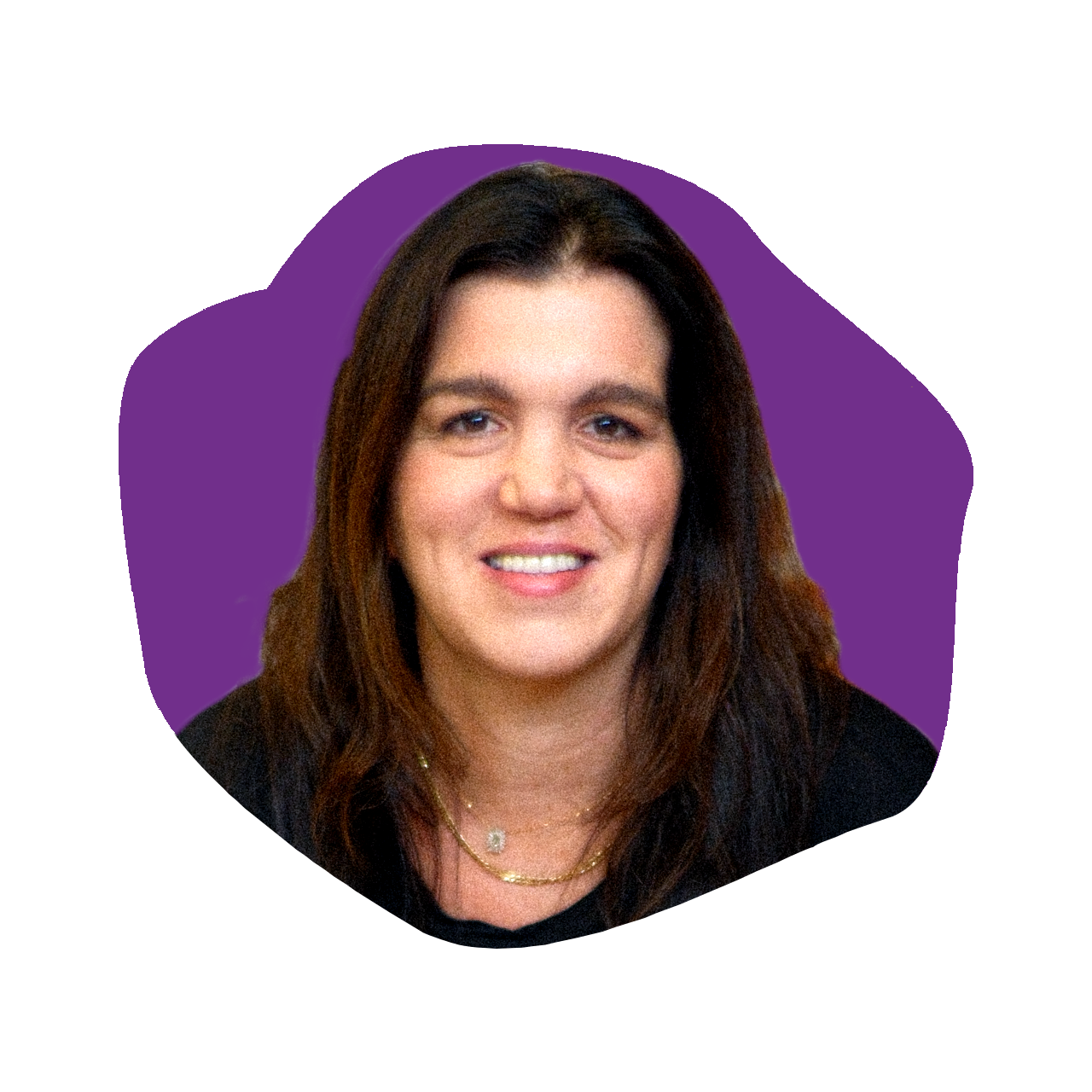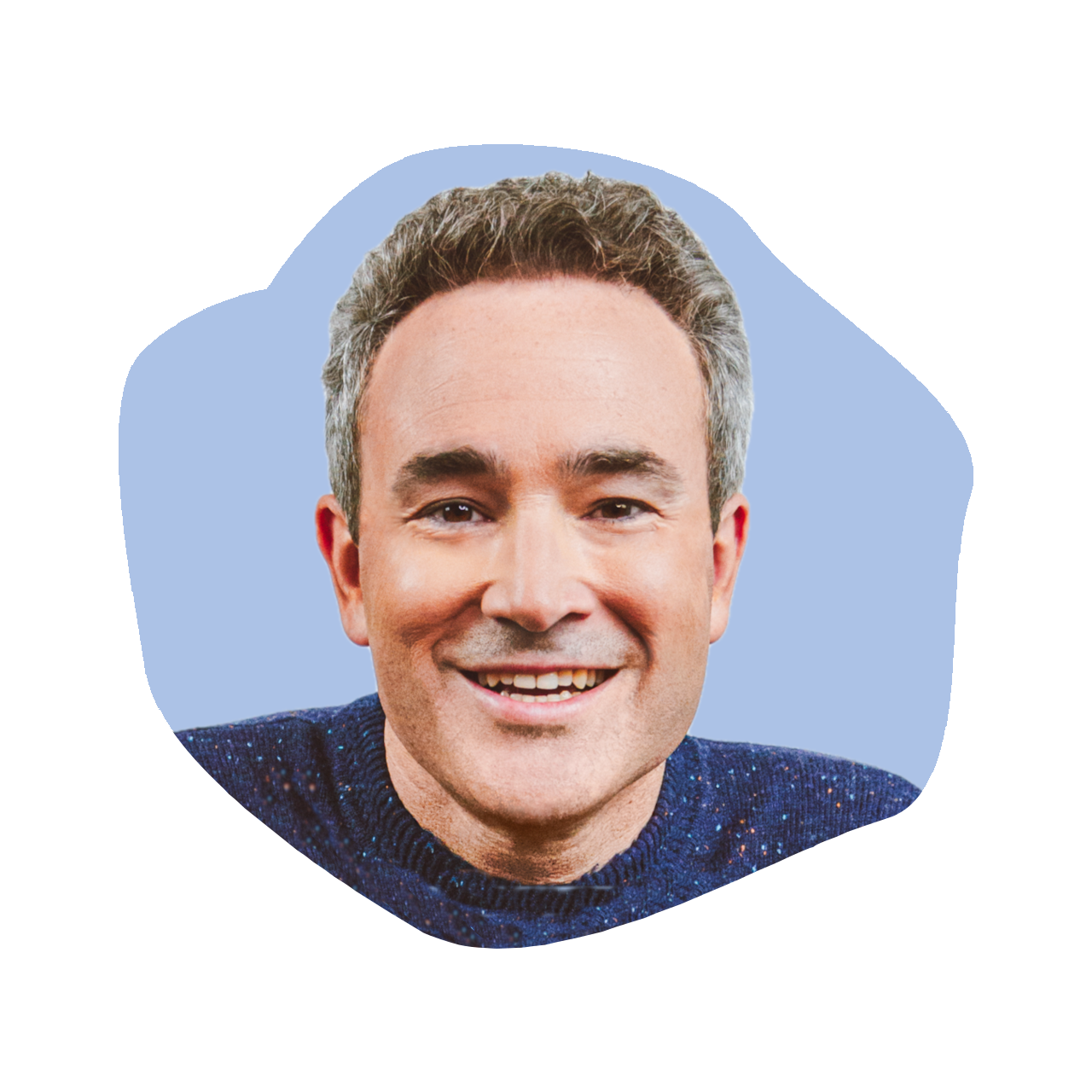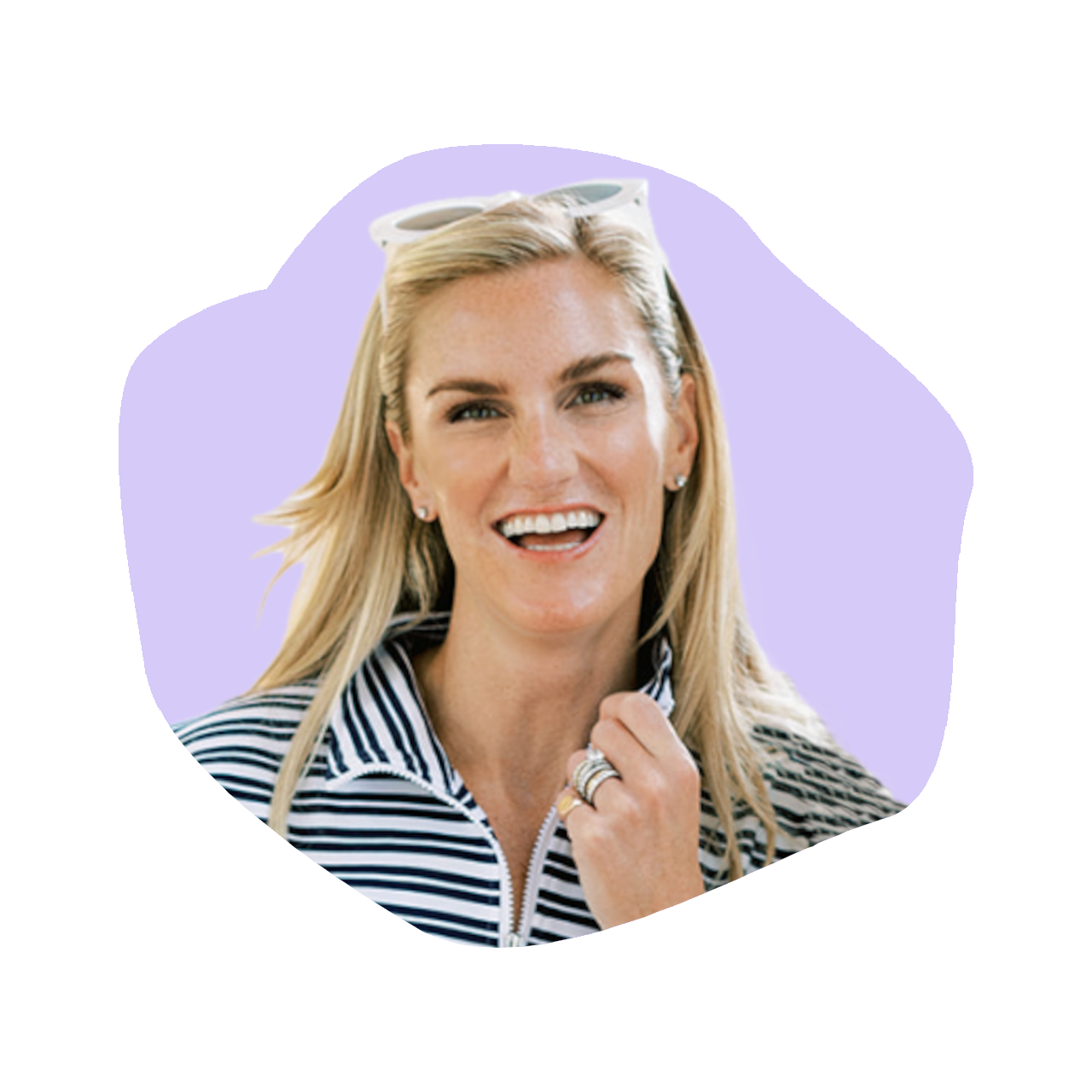Doss Cunningham: Chairman & CEO of Nutrabolt
Episode 749
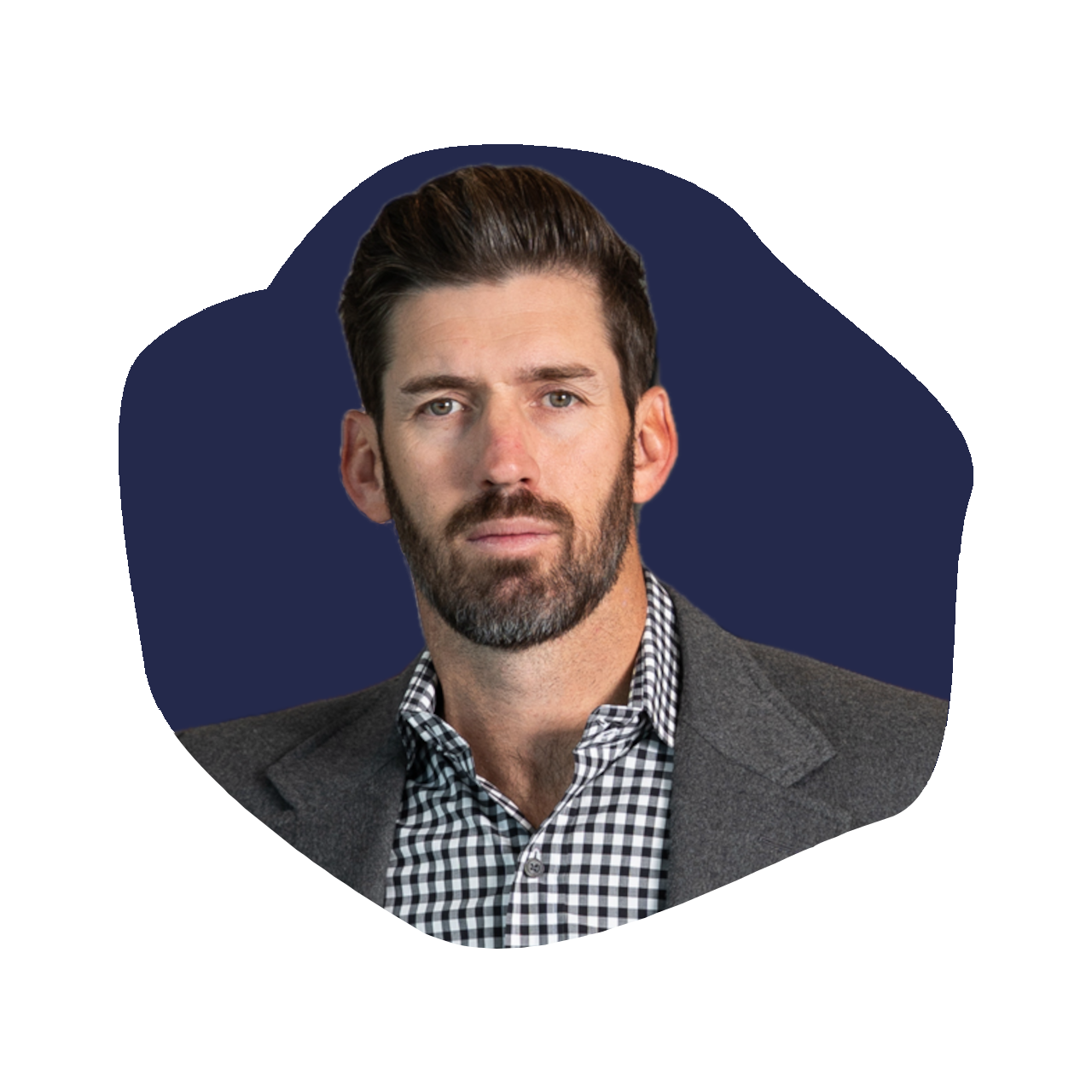
On today’s episode, Kara welcomes Doss Cunningham, Chairman and CEO of Nutrabolt, the powerhouse behind consumer-loved brands like C4 Energy, Cellucor, and XTEND. Over the last 20 years, Doss has led Nutrabolt to become the largest independently-owned active health and wellness portfolio in the world, trusted by athletes, fitness enthusiasts, and millions of consumers around the globe.
Doss shares the story of how Nutrabolt scaled from a single sports nutrition brand into a global performance wellness company. We dive into the rise of C4 as one of the fastest-growing energy drinks in the U.S., why Gen Z is reshaping the wellness space, and how athlete partnerships with stars like Saquon Barkley, CJ Stroud, and even investor Kevin Hart are fueling the brand’s cultural momentum. From building sustainably while staying private, to fostering a mission-driven culture, to creating a one-of-a-kind Austin HQ that reflects the company’s vision—this episode is packed with lessons for entrepreneurs, brand builders, and leaders chasing growth with purpose.
Don’t miss it!
Resources from
this episode:
Enjoying this episode of #TheKaraGoldinShow? Let Kara know by clicking on the links below and sending her a quick shout-out on social!
Follow Kara on LinkedIn – Instagram – X – Facebook – TikTok – YouTube – Threads
Have a question for Kara about one of our episodes? Reach out to Kara directly at [email protected]
To learn more about Doss Cunningham and Nutrabolt:
https://www.linkedin.com/in/doss-cunningham/
https://www.linkedin.com/company/nutrabolt/
https://www.linkedin.com/company/c4-energy/
https://www.instagram.com/c4energy/
https://www.instagram.com/nutraboltlife/
https://www.instagram.com/cellucor/
https://www.nutrabolt.com/
Transcript
Kara Goldin 0:00
I am unwilling to give up, that I will start over from scratch as many times as it takes to get where I want to be. I want to be you. Just want to make sure you will get knocked down. But just make sure you don’t get knocked out, knocked out. So your only choice should be go focus on what you can control. Control, control. Hi everyone, and welcome to the Kara Goldin show. Join me each week for inspiring conversations with some of the world’s greatest leaders. We’ll talk with founders, entrepreneurs, CEOs and really, some of the most interesting people of our time. Can’t wait to get started. Let’s go. Let’s go. Hi everyone, and welcome back to the Kara Goldin show. Today’s guest is someone who knows how to build a powerhouse in one of the most competitive categories out there, and isn’t afraid to keep pushing the boundaries of what’s possible. I’m talking with Doss Cunningham, who is the Chairman and CEO of an incredible, incredible brand and company called Nutribolt. You may know it for incredible consumer brands like c4 energy Cellucor and extend under his leadership, c4 has become one of the fastest growing energy drinks in the US and the number one pre workout brand globally, trusted by athletes and fitness enthusiasts everywhere. And in our talk today, I hope to dive into how Nutribolts scaled from a single sports nutrition brand into a global portfolio, and why Gen Z in particular is reshaping the wellness market and what it takes to go toe to toe with legacy giants and actually win as they are doing. So I cannot wait to dig more into everything that Doss is doing. So without further ado das welcome. So excited to finally meet you.
Doss Cunningham 1:57
Thank you for having me. Yeah, this is a great privilege to come on your show and look forward to telling our story, and, yeah, happy to be here. Awesome.
Kara Goldin 2:06
So Well, let’s start with kind of your personal journey of building what you’ve built, what inspired you to take the leap into active health and wellness and actually go and create a product, I think, about 20 years ago.
Doss Cunningham 2:21
Yeah, so, I mean, there’s really two kind of origin stories. There’s the story of me as a young kid, you know, playing sports, but always being undersized, you know, trying to gain weight. Mom wouldn’t let me play football because, you know, I didn’t weigh enough, and she’s worried I’d get hurt. So I was always a kid trying to figure out, you know, how to get more protein, how to take in enough calories where I could actually gain that weight. Fortunately, I just ultimately didn’t grow until I was, you know, in my late teens. So there’s, there’s, there’s that story, and then there’s really growing up in a working class family, and, you know, things were tight. And I learned from a very early age that if I wanted something, I needed to find a way to go, you know, earn some extra income. And so I became a entrepreneur, probably at the age of, you know, eight to 10 years old, you know, many small little kid ventures, you know, through my adolescence, and you’re really learning how to go out there and make a buck, learning how to get in front of people. And that’s something that those two things kind of intersected a little bit later in life. When I was at Texas A and M, I was studying accounting. I was in a five year master’s program, and had no plans of actually being in the health and wellness space. I was going to go work for Deloitte initially, and then my ultimate goal was to move to New York and be in the transactional space, private equity hedge funds. But I ended up meeting a couple people that were interested in starting a supplement company. They were some young founders that had been in the sports nutrition space as retailers. They’re a little bit older than me at the time, and I met them, I loved their vision, and I was asked to come in and help them with their accounting. And finance was supposed to be a part time gig, but one thing led to another, and as I’m finishing up school, I’m working, you know, 6080, hours a week trying to help these guys, you know, navigate the challenges of being a startup, you know, and being bootstrapped, you know, was was definitely something that, you know, required just an incredible level of discipline around managing cash. And so I got to contribute early, and that led to being pulled into the partnership. And. Ultimately resulting in me becoming the CEO, and it’s been an incredible journey. It started for me over 20 years ago, and it’s amazing how Time does fly.
Kara Goldin 5:15
So this was sell you core. That was back in 2002
Doss Cunningham 5:19
this was selling core, yeah, so our first brand was selling core, launched in 2002 sports nutrition, mainly sold in specialty supplement shops, including GNC
Kara Goldin 5:31
and so you initially started, or I guess, the partnership that that you had, how different is that product today versus what it was like when you first started in 2002
Doss Cunningham 5:44
Yeah, I think, you know, 23 years ago, 2000 you know, I guess it’s been 23 years. It was kind of the Wild Wild West, you know. So the supplement space, there are a lot of gray areas, you know, there were supplement categories like ephedra that people were consuming a lot of. There were testosterone boosters that, you know, a lot of Major League Baseball players ended up, you know, having to deal with. But these were legal supplements at the time, and so the category was, you know, much more kind of hardcore, you know, performance enhancing type products. But, you know, we built our company a little bit differently, you know, we wanted to focus on the fitness enthusiast, not just the athlete. So we wanted to expand, you know, the number of, you know, consumers we could speak to. So we had a really robust offering focusing on helping people, you know, put on muscle, help people recover from the workouts, help people lose weight and generally just be healthier. And so we had a with a broad assortment. And you know, today, you know, we’ve only continued to expand that assortment. Biggest difference is today, we’re in the beverage space with our c4 brand. It’s been really fun navigating this new category over the last six years. Now it’s a category that’s really like, 20 times bigger than you know, the sports nutrition category that we were, you know, starting out in. And, you know, the the opportunity to really bring our mission to more people, you know, through a much larger category, really got me excited. And so, you know what still matters? Yes, you know, it’s similar from the origin, you know, of the businesses, we still care about efficacy, delivering functional benefits to our consumers, helping them meet their goals. You know, today, though, we’re doing it and more convenient form factor and beverage and with way more points of distribution, our products, you know, can be available for for consumption.
Kara Goldin 8:04
Yeah, that’s That’s awesome. So when you think about those, those early years, I guess you know, you’ve grown to be the number one pre workout globally. And, you know, really a brand known in the energy drink space, I feel like you kind of came out of nowhere, even though you’re only 20, over 20 years old. But there’s probably people that have only you know, found you maybe in the last couple of years. I and I always tell people that’s good news. I remember meeting the founders of vitamin water, and I was like, Oh, yeah. I just like, pick up your brand in in the last like, year, and here I thought I was a, you know, disrupter. I had discovered the product, and it was 12 years old. Like, I was like, Where have I been, right? So, and, but that’s like, you’ve got so much white space out there. Right when you meet those people, I’m sure you’ve met people saying, like, Oh, God, I just found Yeah, you know it’s, it’s, it’s more exciting than saying, oh, you know you’re, you’re some other drink that you’ve been around forever and doesn’t really have the growth that you have. Where would you say was the moment when you really felt like you’ve broken through to people.
Doss Cunningham 9:26
I mean, there’s a couple inflection points, right? And very different kind of points of scale. So, you know, we were a, once again, you know, a bootstrap company, organically grown through specialty Mom and Pop retailers, GMC franchisees, and so we were not well known, we were not mainstream, we weren’t sold in mass. We weren’t sold really online. This is kind of pre Amazon, and you know, it wasn’t until we launched the c4 pre work. Out almost 10 years into our company’s history that, you know, we really started to have this new opportunity to expand into someone’s other channels. So we in 2011 we launched c4 and we launched it as a specialty product. And you know, what had been true about our brand up to this point was we were regarded as super premium, you know, brand known for delivering results. And you know, a lot of people felt that we were overpriced. They felt like we were not accessible. And so, you know, we had a nice business, but it was small. You know, we’re talking maybe 10, $15 million before c4 launched. And our strategy was to launch a super premium pre workout category, which was the first in our portfolio’s history, and launch it at a price that actually undercut the category. So delivering super premium at a sub category price point. And we thought this could be the gateway into some of our more expensive products. It’ll bring people into the brand that we’re not reaching. And oh my gosh, it worked. You know, we launched see for category was selling it, let’s just say $35 we launched see for it $25 and we had a really nice value size that it made it too hard to pass up. So c4 just rocketed to the top of the pre workout category, became the number one seller at GNC. Then we had vitamin shop knock on the door. Came in, one seller, vitamin shop, and we really filled in to all the specialty channel almost overnight. But we realized that there were some opportunities to cross over into a bigger market, mass market, if we can figure out, you know, how to serve Walmart and kind of meet their customers expectations from a price standpoint. And so that’s when we really started, for the first time, developing a brand architecture that provided a good, better, best model. You know, we were serving specialty with our best products, our most premium. But in mass, we could offer more introductory products, ones that maybe had a slightly reduced feature set, but could be picked up for say, you know, 1999 and you know, we created our c4 Sport Line, which was an NSF certified product line that, you know, still had great benefits, still produced, you know, performance benefits for the fitness enthusiast, for the athlete, had that badge of safety and compliance with NSF, but now is available at Walmart. And so it was a similar brand identity, but a different design, and that allowed us to continue to keep our special retailers happy, but then start to really spread the brand into the mainstream. So we launched at Walmart successfully. Then we moved into Target. We started moving into grocery, Kroger and Albertsons, and then Costco, and once we kind of flipped that switch, you know, into Costco, you know, the brand’s notoriety just skyrocketed. And, you know, we were, you know, once again, launched in 2011 we were, that whole journey that I just described, took about three years, and so come 2014, c4 is not a gateway product to our brand. It is the brand. You know, it dwarfed everything else in the portfolio. And within, you know, the sports nutrition community, within the supplement community, that was our first point of like, really deep down, but once again, that world is very small relative to the energy drink category, and really the cold beverage categories as a whole. So five years after that, we entered the energy drink category, and our total addressable market probably increased 20x at that time.
Kara Goldin 14:06
I think it’s so fascinating to talk to founders who have kind of built their their company in a different way, right? Whether it’s, I mean, you just described how you built it in the specialty, but also health, the health food stores first. And so you sort of hung there for a while, developed the brand. And most people, even at the time, I think, when you were starting, wouldn’t say that, you know, you would anchor into Walmart and grow the brand the way you have, in fact, many people would say, don’t go to Walmart. No offense to any Walmart listeners who are listening, but don’t go there until you go and do conventional grocery and target and some of the others. How did you know that it would work? Well.
Doss Cunningham 15:00
Oh, you know, I don’t know that. We knew it would work, but, you know, we had strong suspicion that, you know, the challenge with the industry is that people weren’t actually developing a kind of a multi tier brand architecture. Everyone was taking what was in specialty and offering it to mass, just maybe a smaller size. And so there are so many brands that came before us that were massive in specialty and really had the credibility of that more kind of advanced consumer that would really dilute their brand equity as they moved into mass, because they’d offer just the same product. And then the small mom and pop retailers that were building these brands, it could compete with the larger mass merchants, whether that be Walmart or grocery or anywhere else. And so for us, it was really about kind of changing the business model. We will not take what we’re taking in a specialty into Walmart. We’re going to create clear delineation. So, you know, both, we believe in both product lines, but you know, we’re focusing on, you know, accessible price points and mass market, while focusing on the latest and greatest, you know, kind of breakthrough technologies in the specialty channel. And that boded really well for us. And when you think about just mass as a whole, you know, for us, you know, going into WalMart, we gained some confidence because, you know, there really hadn’t been, there really hadn’t been a brand come into the pre workout category at Walmart. But, you know, we were surveying consumers that were going in and buying protein, and they were buying their pre workout at other stores. So we knew that if we could get on the shelf there and be adjacent to, you know, a very large protein category that they were already selling, and we were the first, like name brand to go in in the non protein space, that that could actually be a pretty nice milk for us. And it turned out that that was true. You know, we had first mover advantage. We built a great pre workout business at Walmart in really, the first year, and then we were able to expand with them and continue to introduce new products. So I would say that at the time, it was, it was definitely frowned upon. You know, our partners at GNC at the time, they didn’t like the idea of us going to Walmart, but we said, hey, look, you know, we’re introducing our brand at Walmart, but if people will continue on their journey and they want to buy more advanced products, they’re going to end up back in the specialty store. Yeah, so that’s how we went about it.
Kara Goldin 17:39
Definitely, I think gone are the days where people are just shopping in one store as well, or just online. I mean, people are going to Costco, going to Walmart, they’re going to Whole Foods, Trader Joe’s, going into Amazon, their own site. So it all kind of works together. Formulation is always so key. And I think gone are the days where you can have a product that doesn’t taste good, you know, taste is, is definitely something that that hooks consumers. But also, you said it a few times, things that are working for the consumer, right? Like it’s, it’s also, you know, that they’re getting healthier, or whatever they’re they’re trying to do. How have you differentiated? And also, what do you do when you see all these, you know, there’s constantly this new ingredient that’s coming out that you know, should put it in the formulation? Should you not put it in the formulation? You know, how do you think about that? I guess it’s innovation more than anything. How do you think about innovation as you continue to grow?
Doss Cunningham 18:48
Yeah, I mean, it’s, it’s so critical for long term success. And, you know, it’s been something that I think we’ve done really, really well for, you know, the last two decades. You know, it’s today. You know, consumers are more fickle. They they want to try new things. Flavor has been a huge kind of deciding factor for the shopper. So we, we work really, really hard, you know, on flavor, but at the end of the day, it’s functionality. That’s what we really pride ourself on right? And we wanna go deliver the benefits that the consumer is looking for. We wanna use the ingredients that we believe have the best clinical substantiation of being able to deliver those outcomes. And so we have a great R and D team, you know, it starts with that team. They are really the best in the biz, in my opinion. And so, you know, they’re constantly, you know, looking at new opportunities. They’re very well networked with the vendor community that you know is also out there, spending a lot of money. On their own, R and D, and so, you know, it’s not unusual for us to have vendors in our office every week talking about some of their more recent clinical studies. And then our team’s able to, kind of like, you know, parse through that and, you know, think about some of the things that we have, you know, in our pipeline, and what makes sense we do a lot of renovation as well. So we’ll, we’ll revisit products that you know, had been launched previously, and, you know, try and figure out how to upgrade them as frequently as possible. So functionality is critical, you know. But also, you know, we want to show up on shelf and be interesting. So we’ve long believed that package packaging, design and esthetic is one of the most important things you can do from a marketing standpoint, just to be picked up, because the decisions the consumers and when they’re sitting there in front of the shelf, when you have something that’s really interesting, and is well put together, and catches someone’s, you know, eye, you know that a lot of times is all you need to get trial. So we kind of work with, you know, those three things to really differentiate, you know, our brand. And then, you know, we try and associate with people who are authentic to what we’re trying to do, you know. So on the sports side, we work with a lot of professional athletes and sports organizations, you know, really driving credibility. Yeah, I think within the fitness community, work with some of the best, you know, fitness influencers in the industry, and they’re able to help tell the story and how the procs benefit them. So that’s that’s a really important differentiating factor in our success as well.
Kara Goldin 21:47
How many years in, I guess, were, did you look at athletes and, you know, kind of the that world of, of partnerships, endorsements, like, did you do it from day one? Or how many years in, did you really think it’s time?
Doss Cunningham 22:07
Yeah, no, we definitely did not. You know, the catalyst was really what launched our NSF Certified for Sport proc time, because at that time we had the ability now to sell prox athletes. So it made sense for us to bring athletes in to help tell a story. So it’s really been the last 10 years that we’ve started to really grow. You know that part of you know our our story. You know, we’ve worked with some of the most incredible athletes across you know, football, you know basketball, we got, you know, a partnership with WWE that has been super successful. You know, over the last several years, we work with professional basketball organizations like the Boston Celtics and Miami Heat, the New York Knicks, Austin FC, which is in the last club that we’ve had a great partnership with for the last five years. So, you know, we just continue to build on our stay involved athletes. And you know, that’s, that’s been a tremendous asset for us, you know, as we’ve tried to, like, really differentiate further from the category, because everyone today is a performance brand, right? So definitely, we believe that we are the authentic performance brand, and those athletes really help tell a story.
Kara Goldin 23:41
So Nutribullet stayed private for a very long time, scaling without the pressures of public markets. But what have you learned about sustainable growth as you’ve continued to grow? Yeah?
Doss Cunningham 23:55
I mean, I think it starts with having, you know, long range vision, right? You know, can’t show up January 1 without a plan, and you try and figure it out. You know, you gotta, especially as the business moves into some of these bigger markets. You know, the innovation pipeline is, is a longer it takes. It takes a longer to bring something to market. You know, the commercial process is more involved, and so we really have to be planful. We got to be thinking about, you know, what we want to do three years from now, now. And, you know, thinking about how the category is changing. You know where the white space is. You know where we think, you know certain, you know trends, or certain signals we might be receiving back from shoppers. You know what that’s, you know, ultimately pointing to. And so by, by having a vision of where things are going, and you know, then starting to put, you know, real strategies against that, you know, it’s, it’s allowed us to really just sustain the growth. And then, you know, for for us, every several years, you know. Looking for a step change, whether that’s an investment, moving into a new big category, because when we do that and that further kind of compounds the organic growth we have on mature parts of our portfolio,
Kara Goldin 25:13
definitely. So Nutribolt isn’t just about product, it’s also about lifestyle, and in your headquarters in Austin, I understand you have quite the lifestyle environment that you’ve created there. Can you share a little bit more about what you’re doing?
Doss Cunningham 25:33
Yes, happy to so we moved into our new campus July 2024 so a little over a year now, and we wanted to build a place that really reflected, you know, our values, and really put on display, you know, our mission as a business. And you know, we’ve been focused on being the, you know, a human performance company and helping maximize human potential. And so we thought it would be great if, on the first floor, when you first walk into the building, it’s, it’s, it’s a, it’s a great fitness facility. You know, we’ve got all different types of modalities for training in different sport opportunity of a football field. We have a basketball court. We have, you know, Pilates studio. We have a physiology lab where you can get some most state of the art testing done. We have a really nice cafeteria where we bring in, you know, fresh, you know, healthy food. We have a recovery lab, you know, where you can go get an IV or do compression or hyperbaric or red light therapy, we have physical therapist that can help, you know, work on your your aches and pains, to get you ready for your next workout. And so we wanted you know, the the world that we’re out there, ultimately supporting, you know, the life that our consumers are living. We wanted to bring that into the building, and we wanted it to be just overwhelming really, you know. And people know what we do within minutes of walking into the first floor. But then, you know, we also work here. And so when you get to work out in the morning and be in that in that environment, and then it’s time to go up to the office, it’s fresh in your mind. You don’t forget what we’re all about. You don’t forget about the mission that we’re all trying to serve. And that has really, I think, been a huge enhancement, you know, to a company. I feel like our culture has always been, you know, this way, but now that we have this, it like further manifest, like what we believe in, into a more physical domain, and we want to share that. So the other piece of it is, you know, as we continue to grow, and, you know, we’re scaling, you know, north of a billion dollars this year in sales. You know, we want to still act like a starter. You know, think big, act small. And so we’ve invited a lot of entrepreneurs, some of the consumer packaged goods space, some in, you know, the tech space, to come use our facilities, come work out, come do recovery, come to the cold part. And it’s created just these network effects. You know, we’re sitting there, you know, having conversations with other founders, other creators. You know, people doing really great things, and I think that just created an incredible brain trust. And our vision is to continue to invite those people onto campus and, you know, try and find ways for them to spend more time with us. And I think that’s, that’s a very unique thing. It’s almost a, we work meets, you know, a kind of a corporate headquarters all wrapped up in this, like entrepreneurial
Kara Goldin 29:10
though that’s, that’s incredible. Do you plan on opening them in other locations,
Doss Cunningham 29:16
not, not as of now? You know, I do think that the gym we built the kind of the 360 amenities that we have, I think could be incredible in a New York, LA, Miami, Chicago, you know, especially if we can bring in, you know, the athletes and the influencers and entrepreneurs, you know, and our brands can kind of have, you Know, a strong presence in those spaces. I think, you know, contents everything. I think they’re great, they’re great opportunities for, you know, content creation as well.
Kara Goldin 29:49
Yeah, definitely. So you’ve seen both sides of fundraising building with Lean budgets, and you’ve also had serious capital. Um. Along the way. What’s your advice to entrepreneurs who are navigating the investment climate, which has significantly changed? But what would you say is is really key to you know, whether it’s you giving yourself advice or or maybe somebody who you know is dealing with this now that is just frustrated with what’s going on out there.
Doss Cunningham 30:28
This could be its own podcast episode. Yeah, I think. I mean, I’ll just start with the most obvious. I mean, picking good partners is everything, right? There are great investors that really want to help and provide capital. And then there’s, you know, investors that are, you know, purely focused on, you know, allocating their capital and getting the best return and as fast as possible, on, you know, basically their timeline. And, you know, I think finding a true partner that can really lean in, you know, subscribe to the mission, you know, they had to write, like what you’re trying to actually do, not just the financial opportunity, is super critical. But I think the second thing, and probably something that’s been more of an issue as of the last five years is, you know, don’t fall in love with your valuation. You know, when you go out there and you chase the highest valuation and you try and raise the most amount of capital you put, you put a lot of pressure on yourself. And so you go and raise a really high valuation, and then you come back and raise again. You know, the markets not underwriting that valuation. You know that it can become really tough to have down rounds and, you know, continue to get the funding that you need to get. So I think it’s about being practical around value, identifying Win Win opportunities for the investor and the entrepreneur founder, raising too much capital means oftentimes you have to deploy capital too quickly. You got to go try and accelerate the business, maybe unnaturally. And I’ve seen some companies go out there raise a lot of money, you know, and the idea was, we’re gonna, we’re gonna invest all this, we’re gonna spend all this money. And they haven’t really figured out yet, like, how to get the right return on that invested capital once they have it. And so, you know, I think being very disciplined around taking the capital you need, you know, still, still being scrappy, you know, even though you now have a financial partner and trying to drive, you know, the best efficiency possible from a capital standpoint, I think that would build really,
Kara Goldin 33:02
really well. One of the brands, speaking of investments, one of the brands that I know that you have a partnership with is bloom, and we had the founder, the co founder, on a while back. But what have you learned about that partnership? I mean, it’s obviously that those guys are killing it, and you believe in the mission, and founders are still there all, all of that. But what have you learned in in that partnership that is, is worth noting? Yeah.
Doss Cunningham 33:35
I mean, I think first of all, we were very privileged to meet Mari and Greg. Back in the spring of 23 they were building an incredible business. And, you know, we thought there could be an opportunity for us to work together and really expand on, you know, what they were building. I think what I’ve learned, you know, and I’ve learned this because we did, we did an acquisition in 2017 of a brand that was hot on fire, and we were so quick we wanted to, like, realize all these synergies. You know, we completely folded it in under our roof. And you know, while we had some great initial success, as far as just expanding the volume, growing the revenue base, driving, you know, all kinds of synergies on the cost side, we kind of lost the soul of the business. And you know what I what I know to be true about the bloom brand is the heart and soul of this business. You know, lives with Mari and with Craig and Leo, their their management team. And you know, we want to partner with them to help accelerate, facilitate. You know, tremendous growth, but we want them, you know, continuing to. Could drive the brand and lead the vision. And so I think there’s something to be said about real partnership. You know, not, you know the kind of partnership and quotes there where you know, you you find ways to work together and create, you know, clear lanes, you know, where people can go out there and do what they do best.
Kara Goldin 35:23
Yeah, definitely. I love how you guys have have built that. And clearly, you know, Bloom has been focusing on a different segment to women. So it just seemed like a really nice match.
Doss Cunningham 35:37
Yeah, I mean, for us, it was very complimentary. Our portfolio has skewed male, and, you know, their brand has skewed female and a little bit younger. We’ve been more on the sports nutrition, performance space, you know, they’ve really built a nice lifestyle brand, really around like health and wellness. And, you know, I think for us, it’s, you know, as incremental of a partnership as you could possibly ask for
Kara Goldin 36:07
love it. So last question, what’s been the most rewarding part of your journey so far, as you mentioned at the top of the interview, you didn’t plan on being a founder. It doesn’t sound like you didn’t plan on, you know, building a brand that is, you know, heading into the billion range and sales, it’s, like, it’s incredible. Like, do you ever just stop and say, what have we done, right? Like, it’s, it’s pretty, it’s, it’s pretty great. So you should honor that, for sure, but, but what makes all of this hard work worth it?
Doss Cunningham 36:47
It’s a great question. And no, I don’t stop and, you know, celebrate nearly as much as I probably should. But you know, I think when I look around and I think about all of the people that have been a part of this company, you know, and many of them have gone off to start their own successful companies, or they’ve, you know, come here and learned valuable skills, or, you know, they taught us valuable lessons, and then moved on to the next thing. I think it’s, what’s really rewarding is to kind of take a step back and like, really, you know, think about all of the people have been a part of this and where they are today, and, you know, where we are today because of them. Yeah, I think everyone, for the most part, that’s been part of this journey, would reflect on it being a very positive one. And I’ve had a lot of conversations with, you know current and you know prior, previous employees. And when they tell me that, you know the experience changed their life, you know that they’re they’re grateful for wanting had the opportunity to be part of Nutribullet, that that really makes me feel great. You know that makes it all worth it, definitely.
Kara Goldin 38:05
Well, Doss. Thank you so much for sharing the journey and letting us all in a little bit more on the Nutri bolt brand. Really appreciate everything that you’re doing. I love the community aspect of building your brand too. It’s super unusual, but, but huge. I think it’s, it’s really important. It makes, should make everybody think about, you know, what can they be doing with their own brand to kind of move the needle. But if you’re someone committed to the healthy lifestyle that that Nutribolt is definitely check it out and purchase it. Go to many stores online. It’s all over the place. So and for those who are listening today, thank you again for listening, and until next time, thanks Doss. Thank you. Thanks again for listening to the Kara Goldin show. If you would please give us a review and feel free to share this podcast with others who would benefit and of course, feel free to subscribe so you don’t miss a single episode of our podcast. Just a reminder that I can be found on all platforms at Kara Goldin, I would love to hear from you, too, so feel free to DM me, and if you want to hear more about my journey, I hope you will have a listen or pick up a copy of my Wall Street Journal, best selling book, undaunted, where I share more about my journey, including founding and Building. Hint, we are here every Monday, Wednesday and Friday. Thanks for listening and goodbye for now.
